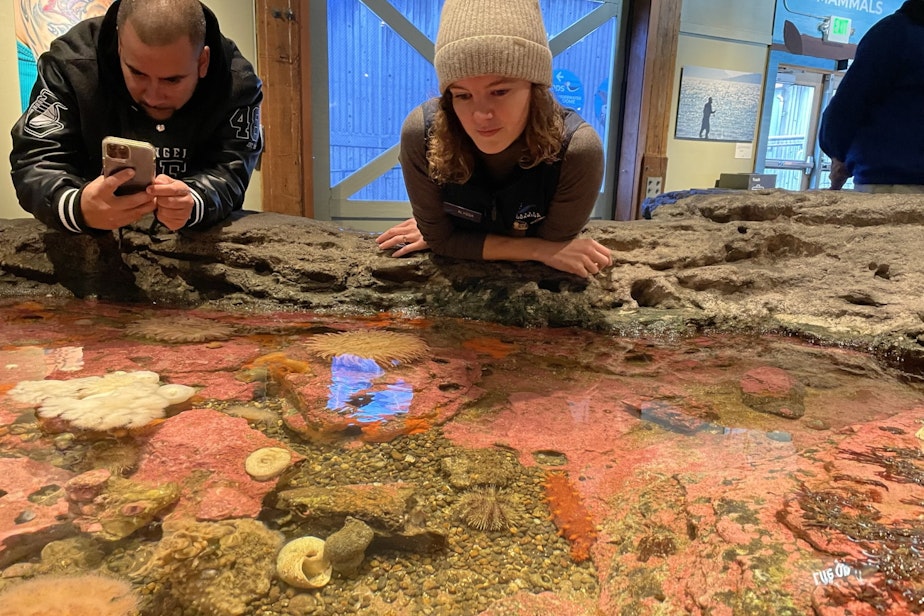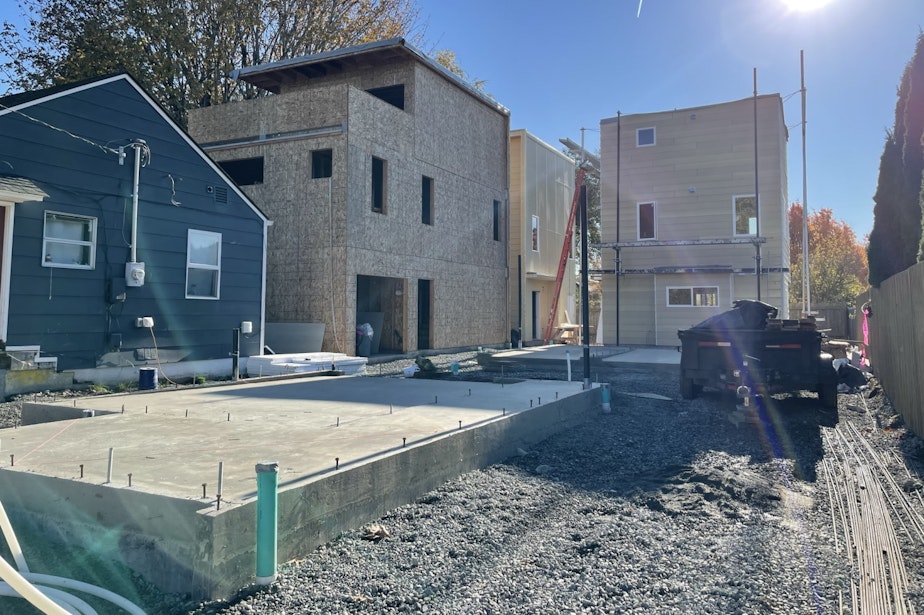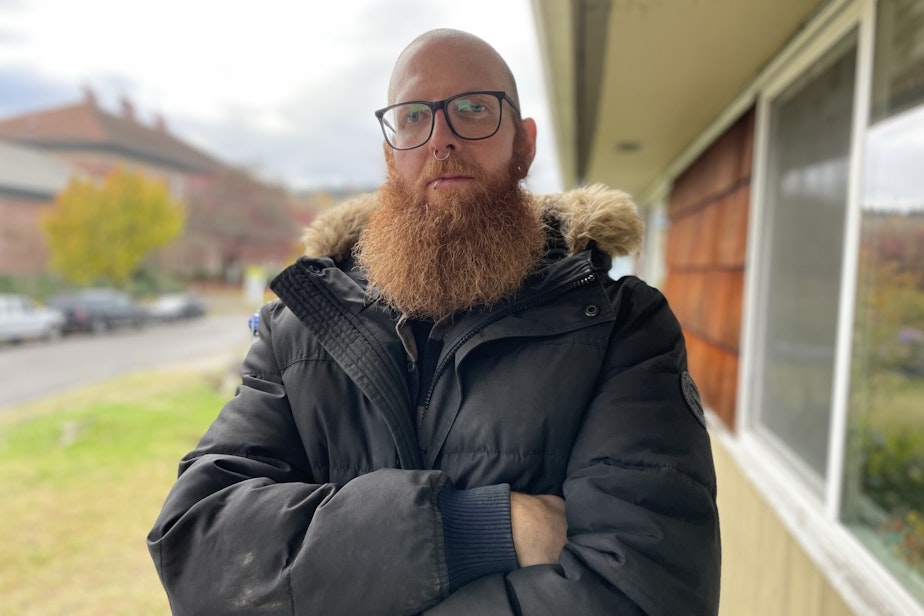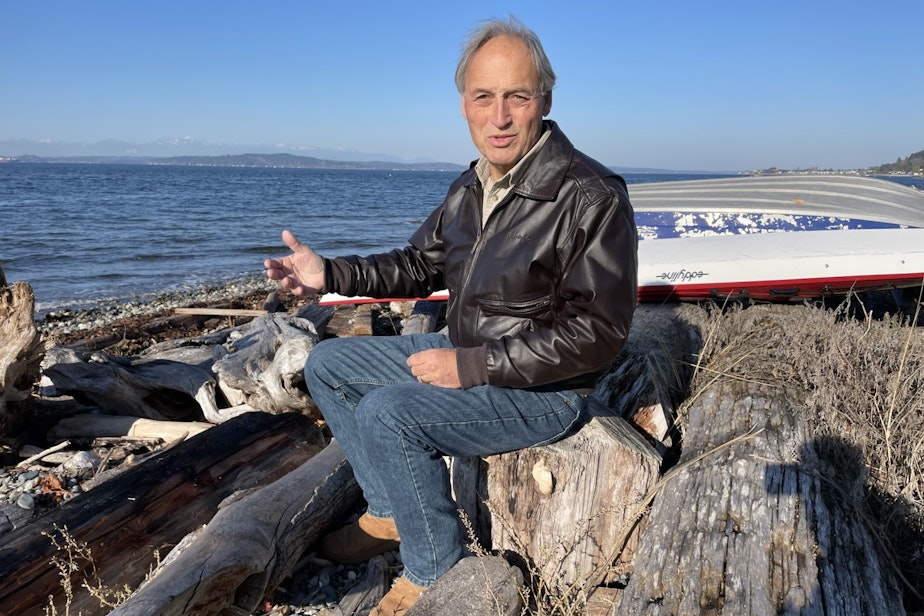What we can learn about Seattle area housing from hermit crabs: The Ripple Effect

This is Part 2 of KUOW's series "The Ripple Effect," in which we cover how growth is pushing people away from the Seattle area and potential solutions to the problem.
This four-part series first aired as a special episode of KUOW's Soundside.
You can click the "play" button to hear the whole one-hour documentary, or you can read the story in four abridged web stories here.
I
n Part 1 of KUOW's series, "The Ripple Effect," we learned how displacement feels in the Seattle neighborhood of South Park. But South Park’s just a link in a chain of communities experiencing what we’re calling “the ripple effect.” In journalism, we’re always looking for memorable analogies to help drive a concept home. I found mine at the Seattle Aquarium, where research diver Alyssa Lind told me about the hermit crab housing market.
She began by pointing one out as it scuttled along the bottom of the tidepool display. “There’s one,” she said, leaning over the water. Hermit crabs are a lot like people. Parts of them are soft and squishy. That means they need protection. So they move into an empty seashell left behind by a snail. “That’s a reason why I always tell people when they see a shell on the beach — leave it there, because that could be a future home for a hermit crab.”

Sponsored
As the crabs outgrow their old shells, they look for a bigger one.
“Their whole life, they’re constantly looking for new shells," Lind said. "They all have their own preferences. So maybe a certain species values armor and weight and structure over being like light and speedy.”
When there’s enough housing for everybody, it can be a beautiful thing.
“There are some types of hermit crabs that will form a conga line from biggest to smallest and pass their shells down the line,” Lind said.
Sponsored
But ocean acidification has made it harder for snails to form shells. This has led to a housing shortage. It brings out the worst in the crabs.
“They definitely will battle over them,” Lind said. “Some species and individuals are more aggressive than others.”
Crabs will grab each others’ shells, or have a tug of war over one shell.
“You might get pushed into a less desirable shell," she said. "You might get pushed into one that… maybe a moon snail has drilled a hole through it, so you have that kind of structural damage to their home.”
So if there’s not enough shells, what happens?
“If they can’t find a shell, they’re probably going to get eaten,” she said.
Sponsored

Humans are generally less violent than hermit crabs, thank goodness. Maybe it’s because people are more adaptable: They can keep their housing costs down by shacking up together or enduring longer commutes. They can decide to spend too much of their paycheck living in a home they can’t afford.
But there is a limit to how much people can adapt. When housing becomes too expensive, people wind up getting pushed out before they’re ready. If you could step back and observe from a distance how people move from one place to another, it would look like ripples on the surface of a tide pool, extending outward.
It begins in places where homes are most expensive, like Seattle and Bellevue, and ripples out from there.

Sponsored
Tech worker Eric Andren and his girlfriend fled expensive Wallingford for relatively affordable South Park.
“My girlfriend and I wanted a house. And we can’t afford to buy a house right now," Andren said. "A lot of the house rentals houses in Seattle are pretty expensive. But this was the most affordable we could find.”
When newcomers come to South Park, South Park residents get pushed to places like Burien.
RELATED: How displacement feels in this South Seattle community: The Ripple Effect
Burien City Councilmember Hugo Garcia says over the last 20 years, he’s seen a lot of changes. First, Burien became an affordable place to live for families that identify as Latino or Latinx. But as new waves of people have resettled from more expensive areas to the North, Burien is changing once again.
Sponsored
“So that the folks that used to live here — that I went to high school with — they moved further away south,” Garcia said. “They moved to Sumner or Federal Way or Tacoma. Because they couldn’t afford to live here any more.”

Garcia said the only reason he was able to stay is because he and his brother found a duplex during the last housing bubble in 2007 and bought it together.
“And so we’re able to stay within a mile and a half from where we grew up… to stay close to our parents," he said. "I’m a Latino immigrant. So, being close to our family’s really, really important in our culture. And that was the only way that we could stay close.”
These ripples of displacement go all the way back to the founding of Seattle. That’s according to Ken Workman, an elder with the Duwamish tribe and the great, great, great, great grandson of Chief Seattle.
He said Seattle invited the Denny party up here to create a settlement.
“So then he welcomes everybody in 1851, and then a little over three years later, those very same people said, 'Please leave,'" Workman said. "And this was the Point Elliot Treaty of 1855. So when you’re talking about displacement and when it started, that was the beginning.”
Workman told me about a wish that Chief Seattle once had — that the people of his village and the settlers, would integrate with each other, sharing tools and talents.

Today, Workman has a similar dream — for this region to finally create space for everybody.
“The world is growing,” he said.” “There are just more people. And so you have to do something — when you’ve got a finite piece of land like we do right here in the Puget Sound area — we’re trapped between mountains. There’s only so much land, and thereby, the only thing I could think of is to go up.
"So when I look at these tall apartments and multi-living duplexes and triplexes and things like that — vertical — I just look at them as longhouses tipped on end.”
Displacement is a regional problem, requiring regional solutions. In the next story, we’ll look at new ideas from around the region that could reshape our approach to housing in the future.
This story is part of our series, The Ripple Effect: How Seattle's housing woes push people out and what to do about it.
- The series was reported and written by Joshua McNichols, KUOW’s Growth and Development reporter.
- Freelance reporter Bunthay Cheam contributed to this report.
- Producers Sarah Leibovitz and Jason Burrows helped mix the audio documentary.
- Kamna Shaastri helped with community engagement.




